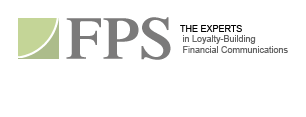Demystifying Lead Scoring and Nurturing
in B2B Bank Marketing
With e-mail marketing continuing to evolve, many bankers remain unsure of how to implement data tracking technology and analyze and interpret the resulting statistics. Meanwhile, some fail to effectively utilize intelligence they develop to nurture leads, close sales and bring about measurable results. In a report by advisory firm SiriusDecisions, 64% of business-to-business (B2B) marketers said that while they recognize the value of prioritizing and nurturing leads, they don't know how.
In a recent webcast, lead generation experts DemandGen and BearingPoint examined the cost of not having in place a system for prioritizing and nurturing leads. They then shared some relatively simple steps marketers can use to set up their own lead scoring and nurturing system.
Below we report their findings and share our own experience in this area to show how easy it is to establish your own lead scoring and nurturing system. With such a system in place, you will spend more time nurturing those prospects that are most likely to buy and thus achieve higher close rates and shorter sales cycles.
The state of B2B sales and marketing
To set the stage for this discussion, here is an overview of the current B2B sales and marketing environment:
- 78% of business decision makers say they are spending less time face-to-face with sales representatives. They want more information in advance of such sales meetings, according to a survey by American Business Media.
- A typical buyer will require between four and seven contacts before making a purchase, according to research conducted jointly by Knowledge Storm and MarketingSherpa. Complex sales can require as many as 11 contacts before a deal is closed. These contacts typically include delivery of at least three pieces of relevant, solutions-based content before a qualified lead converts to a sale.
- More than 60% of B2B marketers report an increase in the length of a typical sales cycle, according to a BearingPoint report.
- Finally, even "bad leads" typically buy within two years, if you continue to engage with them on at least a minimal level, reports SiriusDecisions.
Benefits to be gained
Now let's look at what's to be gained by an effective lead scoring and nurturing system.
An effective system typically decreases the sales cycle from months to weeks, according to a BearingPoint survey. Such a system also typically generates a 78% increase in qualified leads, while decreasing the cost of sales by 10%, the survey found. After implementing lead scoring and nurturing programs, companies typically see an increase in the dollar volume of sales and convert one and a half to three times as many leads as they did before using such a system, according to the survey.
Establishing your system
Next, let's review some simple steps to put a lead scoring and nurturing system in place.
- Sales and Marketing need to agree upon the definition of a "qualified lead." Some 80% of leads are not followed up on by Sales, SiriusDecisions reports. This is likely because of a disconnect between Marketing and Sales as to what constitutes a qualified lead.
- Develop a nurturing system to engage qualified leads. As noted earlier, decision makers prefer to receive at least three pieces of pre-sales content before engaging face to face. Most also prefer this content to be in an objective, relevant format, and experts agree that the most popular delivery channel is the e-newsletter. Here is where the nurturing part comes in. Each touch-point with a client or prospect that serves to nurture — to inform and/or provide solutions — better prepares them for the face-to-face engagement.
- Implement an automated scoring, content-delivery system. E-mail Service Providers (ESPs) have the technology not only to electronically distribute your nurturing content, but they can also automate a scoring system. These systems enable you to prioritize your leads for follow-up. ESPs such as eROI and ExactTarget allow you to assign scores to reflect the level of engagement, in real-time, of each of your recipients.
Scoring leads is even more effective when Marketing and Sales collaborate to establish the value for each prospect. By working together, Marketing gets more buy-in from Sales and reduces disagreement between the two groups as to what constitutes a qualified lead.
For instance, if your nurturing content contains a few choices, such as an article or a link to your Web site, a white paper or a webcast, you can assign a level of engagement to determine each recipient's score. Do you consider a qualified or "hot" prospect someone who clicks on more than one item? Someone who forwards information to others? Who downloads a white paper or links to your Web site and visits x number of pages? To score your prospects, you can assign a number value to each of these actions.
Since the analytics provided by the ESP tell you exactly what online behavior each recipient performs, you now have both a scoring system and details as to why each recipient was given a particular score.
- Be prepared to respond in a timely, relevant manner to high-scoring leads — your "hot prospects." Since Sales and Marketing have agreed on the attributes of a highly qualified lead, these leads can be followed up by Sales according to those priorities. Effective follow-up takes into account the type of content that most engaged each lead. This enables highly relevant follow-up, when considered in combination with the prospect's industry, title and/or the particular solution that they sought out.
Even low-score leads should continue to be nurtured through the ongoing delivery of valuable content. If you do so, as noted earlier, on average 80% of low-scoring leads will typically buy within two years.
. . .
FPS regularly works with financial services companies to maximize the impact of their client communications, including e-mail and online communications. To find out how we can help you develop effective strategies for communicating with corporate financial executives, contact FPS President Vince DiPaolo at 847-501-4120 or [email protected].
If you are not already a MarketScope subscriber, please request your own free monthly edition.
|
 |
|





